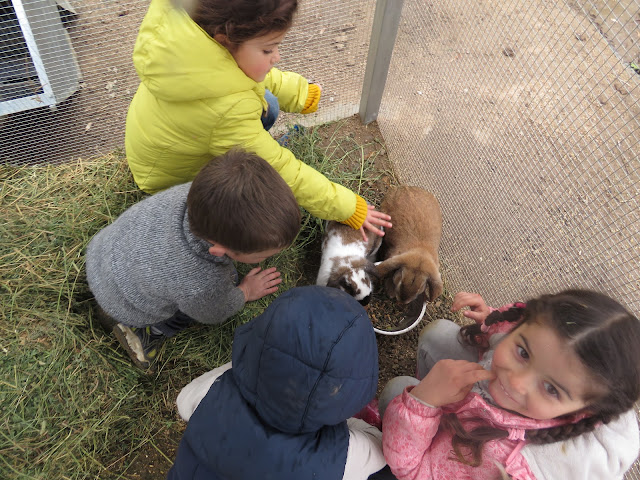In our western society, the family is the main transmitter of the oral language and the school is the transmitter of the written language. Since the children are born they are immersed in a world of writing. Parents read stories to children, go often to the library, parents keep reading at home and it is usual in all households to find a shelf space full of books, stories and magazines. This atmosphere encourages reading and writing and when the school begins, the child already has a great background in the fascinating world of lyrics (Marina, 2008). Inspired by Celestin Freinet, at school we encourage writing through the Magazine that is published every month. Boys and girls write their articles and all of them are printed on the monthly Magazine. Also at the Sant Jordi festivity we publish each and every one of the stories that children have written, as you have seen in this edition of 2019 the book 29 Little Stories. Imagine how important that is for the children, even Freinet in 1924 acquired a printing press at his school in the Alps because he wanted to publish the written works of his students, broadcast, publish a newspaper for children and the entire educational community to understand how important the simple works of children were (Freinet, 1974 ). It is important for children to express through writing all their feelings and can thus channel their way of understanding the world; problems, difficulties, challenges expressed through imaginary characters and situations. There is a mandatory book in all homes written by the fantastic Gianni Rodari; the Grammar of Fantasy. This Italian writer has written such famous books as Telephone Tales that surely all of you will remember from your childhood. In this book of fantasy Rodari gives guidelines, an orientation to create and write fantastic stories through various techniques: the fantastic pair, the confusion of stories, the construction of the absurd and so on. According to Rodari at the school, there is a lack of laugh and enjoyment and it is important for children to laugh and have fun writing, experiencing fantasy and creativity to enrich the child's environment (Rodari, 2012). Writing has the capacity to order the mind, the thoughts, expand the understanding, adjust the expression, it is essential for the child's complete development. And as Confuccio says, writing is learned by writing, reflecting, observing, changing, correcting time and time again. Only by writing a lot and much, do you learn to write:
Tell me and I will forget,
Show me and I will remember,
Let me do it and I will learn it.
Bibliography
Freinet, C. (1974). Consejos a los maestros jóvenes. Hospitalet: Editorial Laia.
Marina, J. A. (2008). La magia de escribir. Barcelona: De Bolsillo.
Rodari, G. (2012). Gramática de la fantasia. Barcelona: Planeta.
Tell me and I will forget,
Show me and I will remember,
Let me do it and I will learn it.
Bibliography
Freinet, C. (1974). Consejos a los maestros jóvenes. Hospitalet: Editorial Laia.
Marina, J. A. (2008). La magia de escribir. Barcelona: De Bolsillo.
Rodari, G. (2012). Gramática de la fantasia. Barcelona: Planeta.


















































